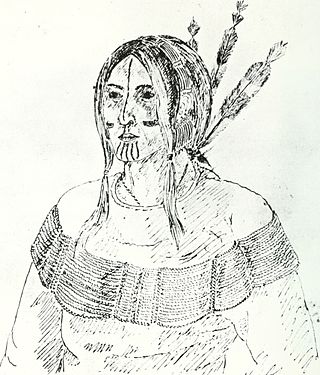Top Qs
Timeline
Chat
Perspective
Yidiiltoo
Hän Gwich’in women traditional tattoos From Wikipedia, the free encyclopedia
Remove ads
Yidiiltoo or Yidįįłtoo are the traditional face tattoos of Hän Gwich’in women, who are indigenous to Alaska and Canada.[1]

History
The practice dates back at least 10,000 years.[2] Traditionally Hän Gwich’in girls receive their first tattoos between the ages of 12 and 14, often at first menstruation, as a passage ritual.[1][2][3]
European and British missionaries of the 1800s and 1900s banned the traditional practice, along with other cultural traditions.[3][2][4]
Starting in the 2010s, some indigenous girls and women began to reclaim the tradition.[2][5][6]
Remove ads
Description
Typical markings include vertical lines from the lower lip that extend to beneath the chin.[2] According to tattoo anthropologist Lars Krutak, the width of the lines and the spacing between them were traditionally associated with each of the nine groups of Hän Gwich’in. Girls would be tattooed to identify their group.[2]
Other markings may be created on the temple or cheeks.[2]
Method of application
The traditional method is a stick-and-poke using needles made from bird bones.[2] Some modern practitioners use tattoo needles.[2]
Notable wearers
- Quannah Chasinghorse, an American model of Hän Gwich’in and Sicangu Oglala Lakota heritage, received her first Yidįįłtoo at age 14. It was applied by her mother, Jody Potts-Joseph. She is a land activist and dogsled racer.[1][3][4]
Appropriation
Some non-indigenous people wear temporary markings, makeup or jewelry that mimics the traditional Yidįįłtoo. Angelina Jolie was criticized for wearing facial jewelry that mimicked Yidįįłtoo.[2]
See also
References
Wikiwand - on
Seamless Wikipedia browsing. On steroids.
Remove ads
